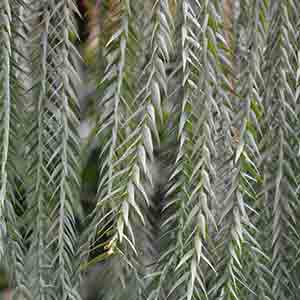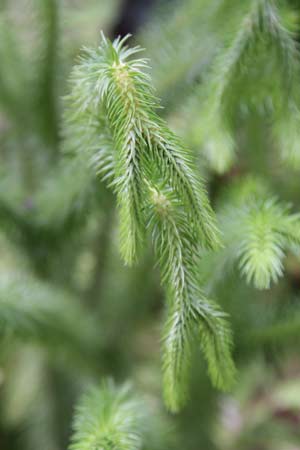
Tassel Ferns are from both Huperzia and Phlegmariurus species, a number are readily available for sale and they grow well in hanging baskets. They are naturally epiphytic and are found growing on both trees or rocks which they use as hosts.
Tassel Ferns are found mainly in rainforests and many prefer a humid situation. In cultivation they are grown in containers and they do exceptionally well in hanging baskets.
These are a very primitive fern, and have been identified as being around before flowering plants, so this puts them as 400 million years old.
The common name of Tassel fern comes from the long spore bearing tassels (foliage) that hang down below the plant itself.
These ferns are suitable for growing outdoors, most species in warmer climates only. Filtered shade is best. Tassel ferns are not really rare in cultivation, they are slow growing so larger specimens can be expensive.
Most varieties grown for commercial and home use are tropical to sub tropical species. Huperzia squarrossa is the water tassel fern, and one of the nine species found in QLD. Three other species can also be found in other areas of Australia. Other species are found through South East Asia, and as they date back to to the time of dinosaurs, truly an ancient plant

How to Grow Tassel Ferns
Huperzia are both epiphytic and hemiepiphytic depending on the species, and with over 400 species they do differ in growth habit.
The epiphytic types grow in trees and are regarded as easier to grow than the hemiepiphytic types. Hemiepiphytic species start life as an epiphytic and then send out roots to the ground.
- Best grown in medium orchid bark potting mixes with added perlite to keep the mix open is excellent for growth.
- Daily watering will be required in the warmer months.
- A more moisture retentive mix that is still open can be obtained by adding some sphagnum moss to the mix.
Growing well in warm climates, in cooler areas most species are best grown indoors where warmth and humidity can be provided.
Although they do like moisture they also like good drainage so stay away from normal potting mixes and look for a fine orchid mix. Fertilizer that seems to work well is our favorite liquid seaweed fertilizer. Huperzia varia is from tasmania and is a cooler growing species than many.
Propagation can be by aerial layering, tissue culture and stem cuttings.
Species include :
- H. australiana.
- H.carinata
- H. dalhousieana (The Blue Tassel Fern -Rarely available for sale)
- H. lockyeri
- H. marsupilformis
- H. phlegmaria
- H. phlegmarioides
- H. prolifera
- H. serrata
- H.squarrosa.
- H.varia
Did You Know?
The chemical Huperzine comes from tassel ferns, it is used to treat Alzheimers’s disease. As many species are threatened due to development, clearing of rainforests and changing climate, it is important to preserve all plant species for both environmental and research reasons.
Tassel Ferns are available for sale from the following nurseries and growers
470 Monbulk-Silvan Road Monbulk VIC 3793
"Guaranteed mail order flowering bulbs, perennials, roses, trees, landscaping plants, garden accessories and community fundraising Austra lia-wide."
www.gardenexpress.com.au

